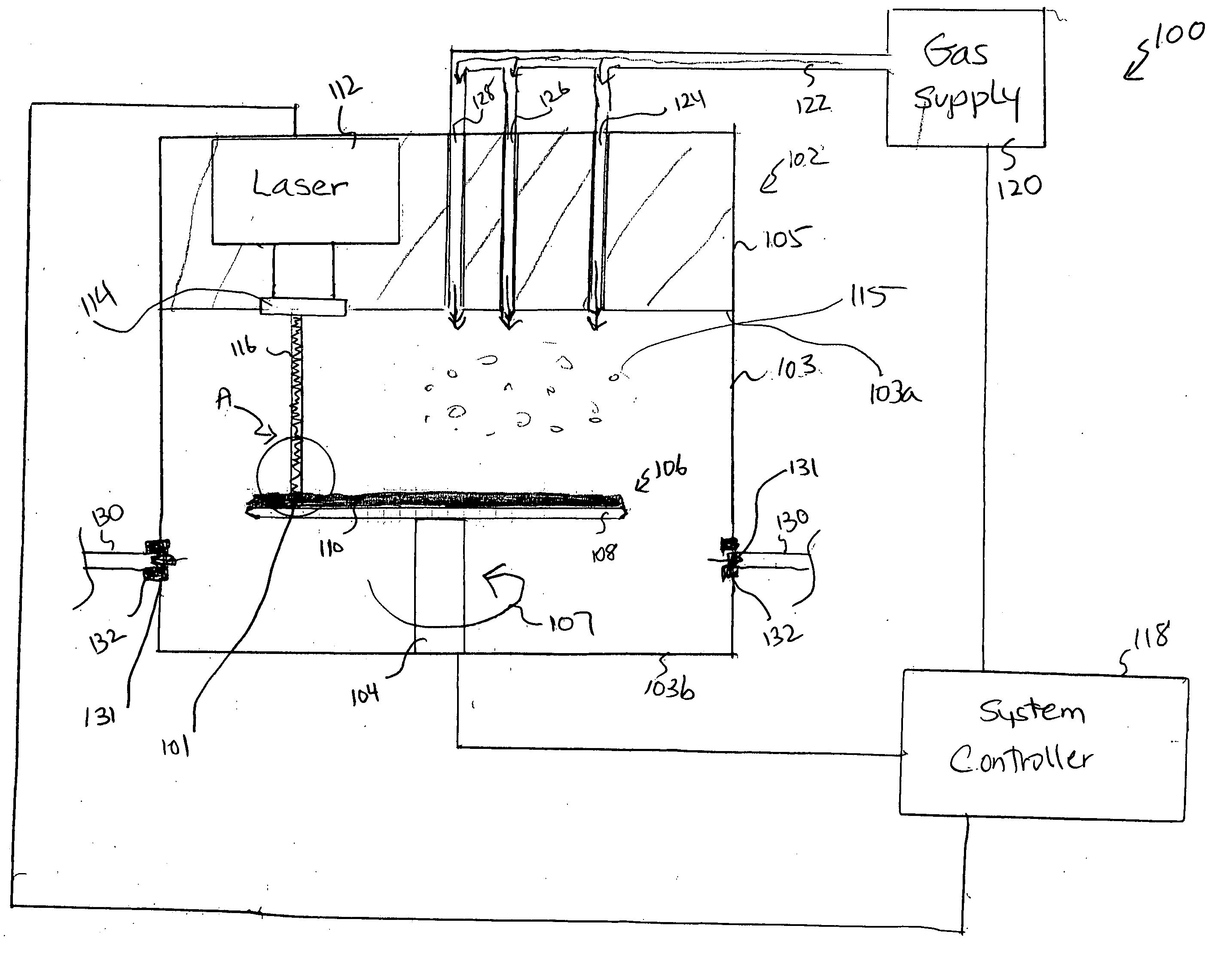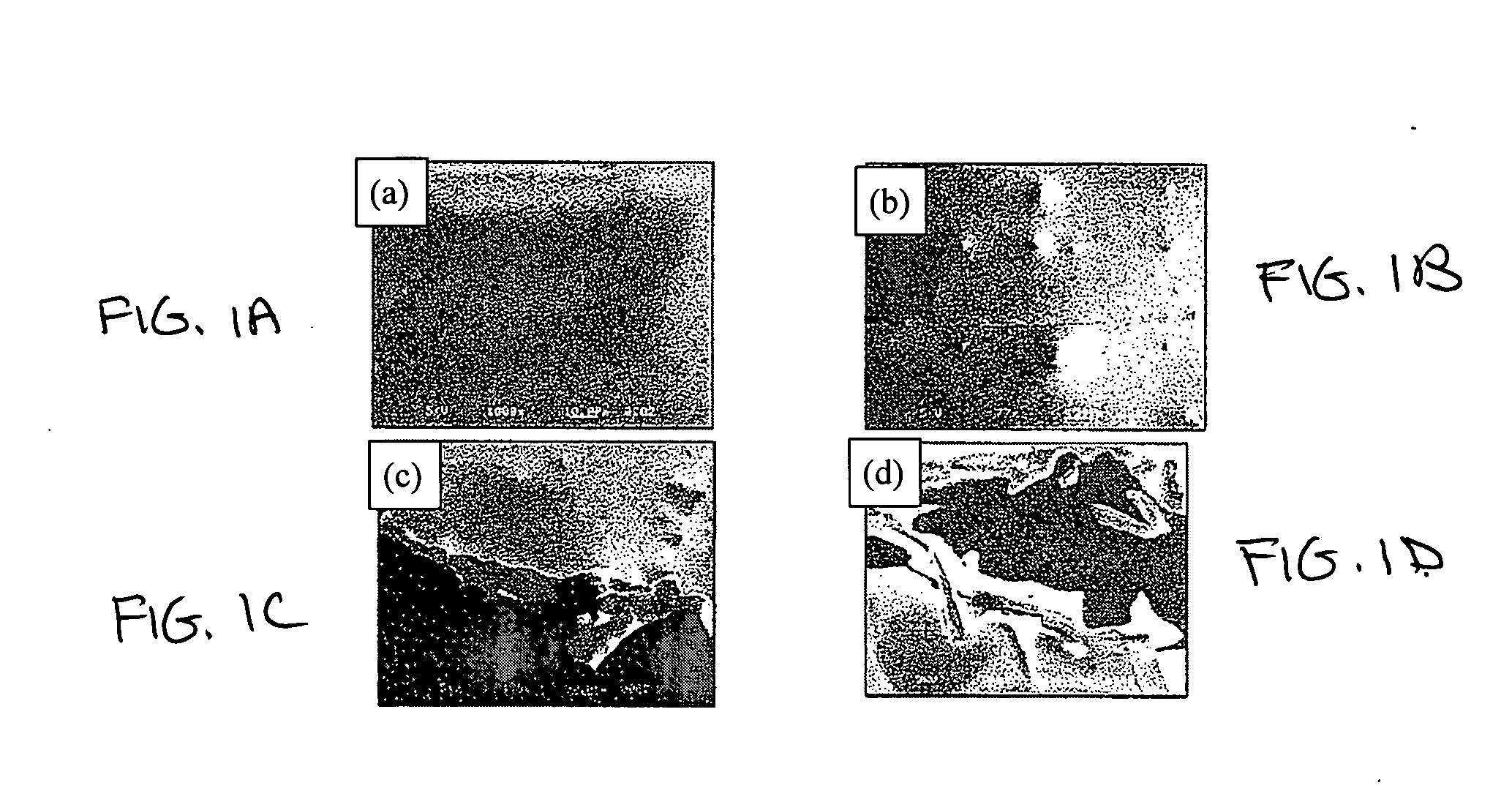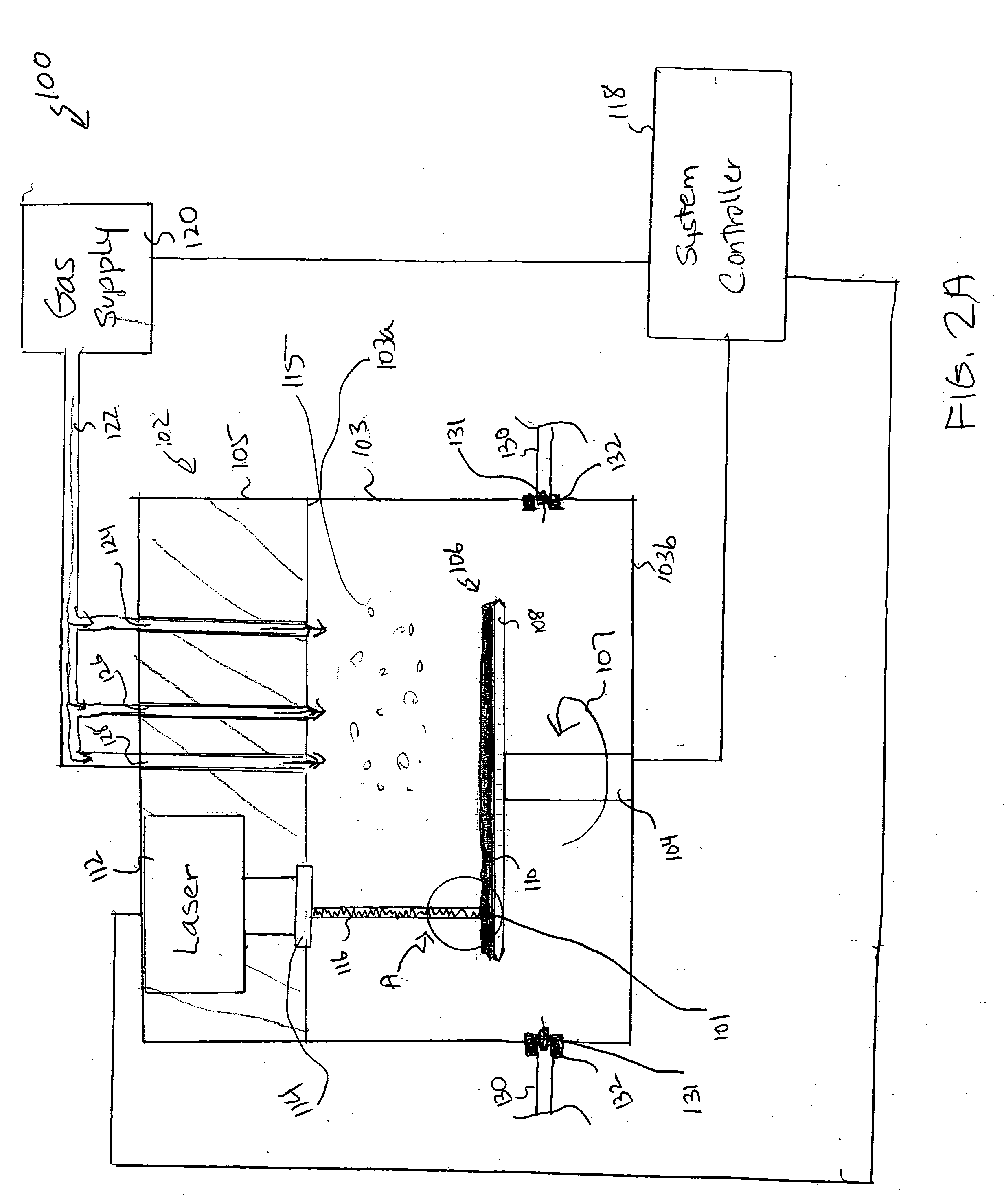Non-contact discrete removal of substrate surface contaminants/coatings, and method, apparatus, and system for implementing the same
a non-contact, discrete technology, applied in the direction of laser beam welding apparatus, manufacturing tools, welding/soldering/cutting articles, etc., can solve the problems of difficult control of photoablation process nature, detrimental effect on integrated circuit device performance, and difficult management of thermal processes
- Summary
- Abstract
- Description
- Claims
- Application Information
AI Technical Summary
Benefits of technology
Problems solved by technology
Method used
Image
Examples
Embodiment Construction
[0033] An invention that is capable of precisely and discretely removing particulate contaminants, films, and coatings from over surfaces of the substrate without substantially damaging substrate surfaces is provided. In one embodiment, high intensity ultra short laser beam pulses issued by a laser system is implemented to break a bond between the particulate contaminants / films / coatings and the substrate surface leading to the removal of the particulate contaminants, films, and coatings from over substrate surfaces. According to one example, an irradiation wavelength of the laser beam is selected such that the laser beam can be absorbed completely by the substrate while is absorbed minimally (if any) by the particulate contaminants / films / coatings being removed. In one example, the laser beam pulse duration can range between about one (1) femtosecond and 100,000 femtoseconds. In the following description, numerous specific details are set forth in order to provide a thorough understa...
PUM
| Property | Measurement | Unit |
|---|---|---|
| wavelengths | aaaaa | aaaaa |
| threshold | aaaaa | aaaaa |
| energy threshold | aaaaa | aaaaa |
Abstract
Description
Claims
Application Information
 Login to View More
Login to View More - R&D
- Intellectual Property
- Life Sciences
- Materials
- Tech Scout
- Unparalleled Data Quality
- Higher Quality Content
- 60% Fewer Hallucinations
Browse by: Latest US Patents, China's latest patents, Technical Efficacy Thesaurus, Application Domain, Technology Topic, Popular Technical Reports.
© 2025 PatSnap. All rights reserved.Legal|Privacy policy|Modern Slavery Act Transparency Statement|Sitemap|About US| Contact US: help@patsnap.com



